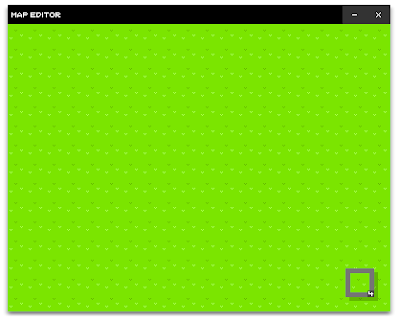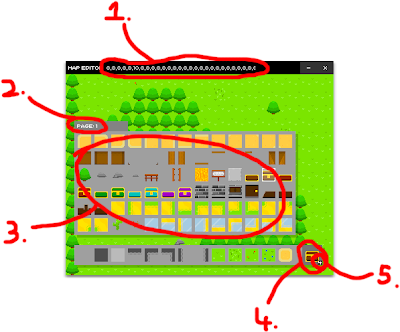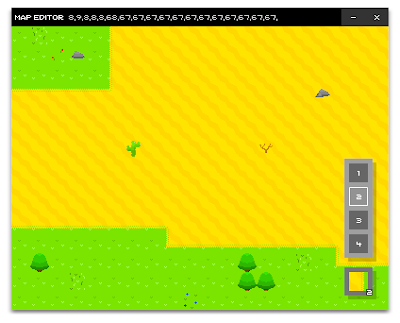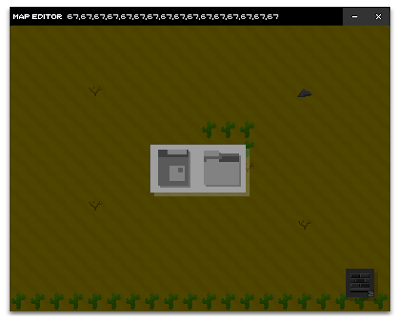Not made a post in a while. Ah well. Recently, I've been rather busy with school, but I've been working on a big project (which I've been steadily progressing with, thanks to a little schedule). I'm going to show off the editor I created for the project, as the project will use lots and lots of map codes to produce one big world:

This is the first thing you see when you start up the editor. It produces a 20x15 tile area (each tile is 20x20 pixels). The default map is just a large grass area. Now, the diagram below shows all of the mechanisms I've implemented into the editor to make it easy for me:

1. This is a small snippet of the level code of the map displayed under the tile selector. The actual level code is 1200 numbers long.
2. This is the page number of the tile selector. I can navigate through the pages by using the left and right arrow keys, or I can scroll through each tile to eventually reach the next page by using the mouse wheel.
3. This is the tile selector displaying page 1 of the tiles. There's 78 tiles per page (plus the 13 tiles on that little bottom bar). To hide the tile selector, I have to move my mouse over the little bottom bar, and to show it, I simply scroll using the mouse wheel.
4. This is the currently selected tile. This helps when I haven't got the tile selector visible. If I move my mouse over it, it moves to the top left hand corner so I can get underneath it.
5. This is the layer number. The layer numbers go from 4-1 (4 being the bottom layer, 1 being the top).
---
Here are a few more screenshots, showing the layers panel and the saving and loading screen:

I right-click to bring up the layers panel. I then scroll through the layers with the mouse wheel.

I hit the escape key to bring up the editor menu. I click either save or load - save allows me to create a new .txt file which then has the level code pasted into it, and load allows me to open up a .txt file that the editor then reads and displays accordingly.
---
That's basically it! Well, I've been creating lots of maps using the editor, but that's all. I also started work on the actual game engine, but I've left that for now; doesn't need doing right this minute. Happy new year!





